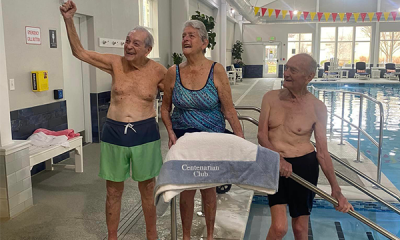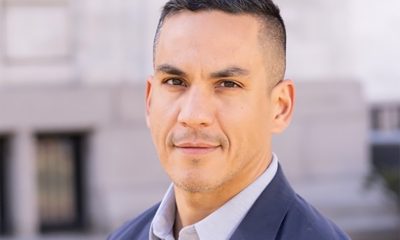Health
Study weighs use of HIV drug ‘before-after’ sex
Study weighs use of HIV drug ‘before-after’ sex
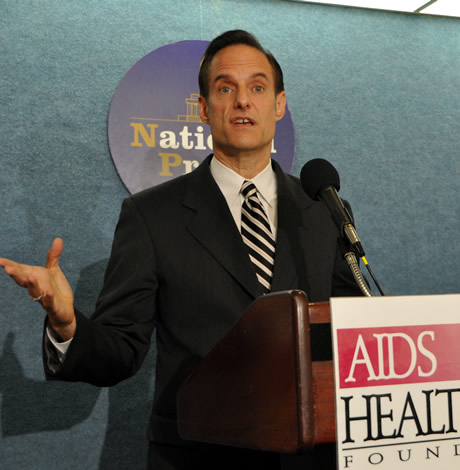
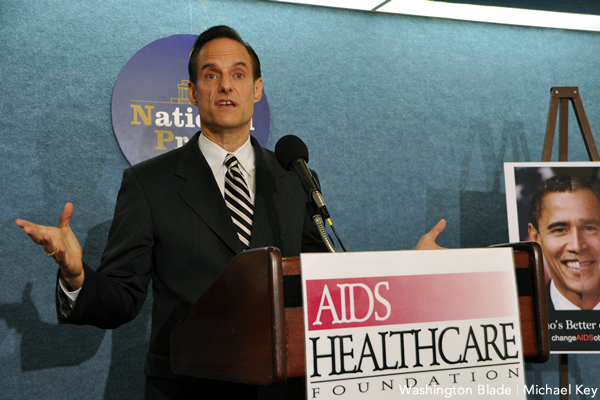
Michael Weinstein, president of the AIDS Healthcare Foundation, said condom use is the best way for gay men to protect their sexual health. (Washington Blade file photo by Michael Key)
A study evaluating the effectiveness of limiting the dose of the pre-exposure HIV prophylaxis drug Truvada to between two and 24 hours before sex and for two days after sex showed that gay and bisexual men who followed this regimen reduced their risk of HIV infection by an average of 86 percent.
The findings of this and a separate study also yielding an 86 percent risk reduction rate for HIV by taking Truvada as a pre-exposure prophylaxis or PrEP on a daily basis were presented on Tuesday before the Conference on Retroviruses and Opportunistic Infections in Seattle.
“These findings together provide additional evidence of the power of PrEP to reduce the risk of HIV infection,” the U.S. Centers for Disease Control and Prevention said in a statement.
CDC officials expressed caution, however, that the first-of-its-kind study by researchers in France of a ‘before-and-after-sex” regimen of Truvada might be most effective for men who have frequent sexual encounters with multiple partners. Participants in the study, which was conducted in France and Canada, had a median of 10 sex acts per month and eight partners every two months, according to the CDC analysis.
With that many instances of sexual encounters, those participating in the study were taking PrEP on an average of three to four times per week, suggesting that a buildup of Truvada in their bodies gave them a level of protection closer to those taking PrEP on a daily basis.
“CDC cautions that researchers do not yet know if this regimen will work among MSM who have sex less frequently and would therefore be taking PrEP less often,” the CDC analysis says. “CDC continues to recommend daily dosing of PrEP and urges people at substantial risk for HIV infection and their health care providers to continue to follow current CDC guidelines.”
Those guidelines along with recommendations by other health experts call for MSM and others to continue to use condoms when engaging in sex, in part, because PrEP does not protect against other sexually transmitted diseases, including hepatitis.
The second study analyzed by the CDC consisted of gay and “other men who have sex with men” who were clients at sexual health clinics in England.
“Participants incorporated PrEP into existing risk reduction strategies, which included condom use,” says a write-up by organizers of the study, who have named the study PROUD. “There was no difference in the number of men diagnosed with other sexually transmitted infections between those on PrEP and those not on PrEP,” the write-up says.
That finding is considered significant because critics of PrEP have expressed concern that men taking PrEP would no longer be motivated to use condoms, placing them at risk of other sexually transmitted diseases.
A third study presented at the Seattle conference, which was conducted by CDC researchers and published in the Journal of the American Medical Association, used statistical modeling to show how the rate of new HIV infections would change if more people with HIV became virally suppressed through treatment.
“More than 90 percent of new HIV infections in the United States could be averted by diagnosing people living with HIV and ensuring they receive prompt, ongoing treatment,” a CDC statement says the study shows.
The statement says the study for the first time developed estimates of the number of HIV transmissions caused by people in different stages of care, including those who are unaware they are infected, those who are retained in care, and those who have their virus under control through treatment.
“By quantifying where HIV transmissions occur at each state of care, we can identify when and for whom prevention and treatment efforts will have the most impact,” said Jonathan Mermin, director of the CDC’s National Center for HIV/AIDS, Viral Hepatitis, STD, and TB Prevention.
“We could prevent the vast majority of new infections tomorrow by improving the health of people living with HIV today,” he said.
“People who were successfully keeping the virus under control through treatment were 94 percent less likely than those who do not know they are infected to transmit their virus,” a CDC statement says the study shows. “However, previous national estimates have indicated that just 30 percent of people with HIV have reached this critical step in care.”
Michael Weinstein, president of the AIDS Healthcare Foundation, which has opposed the widespread use of PrEP, said his organization was reviewing the latest data from the new studies. He said the data he has seen so far show that the French study was limited to the most sexually active gay men.
“This is a small subset of the total gay male population and a far cry from the 500,000 men that the CDC recommended take the drug,” Weinstein said. He cited a recent study in San Francisco that found a 45 percent decrease in condom use among PrEP patients.
“Based on the currently available data consistent condom use is the best way for gay men to protect their sexual health,” he said.
Health
UNAIDS to commemorate Zero Discrimination Day’s 10th anniversary
UN agency urges global action to protect human rights

As the world marks the 10th anniversary of Zero Discrimination Day; UNAIDS is sounding the alarm on the increasing threats to human rights, calling for renewed efforts to protect the rights of all individuals as a fundamental step towards ensuring health for everyone.
Established by UNAIDS a decade ago, Zero Discrimination Day aims to promote equality and fairness regardless of gender, age, sexuality, ethnicity or HIV status. The progress achieved over the past years is now in jeopardy, however, due to rising attacks on the rights of women, LGBTQ people and other marginalized communities.
UNAIDS Executive Director Winnie Byanyima emphasized the critical link between protecting human rights and safeguarding public health.
“The attacks on rights are a threat to freedom and democracy and are harmful to health,” she said in a press release. “Stigma and discrimination obstruct HIV prevention, testing, treatment and care and hold back progress towards ending AIDS by 2030. It is only by protecting everyone’s rights that we can protect everyone’s health.”
Despite challenges, there has been notable progress.
At the onset of the AIDS pandemic more than 40 years ago, two-thirds of countries criminalized consensual same-sex sexual relations. They are now decriminalized in two-thirds of countries. An additional 38 countries around the world have pledged to end HIV-related stigma and discrimination, contributing to positive changes that include 50 million more girls attending school compared to 2015.
To sustain and enhance these advancements; UNAIDS urges global support for women’s rights movements, LGBTQ rights, racial justice, economic justice, climate justice and peace initiatives. By standing with communities advocating for their rights, the U.N. aims to reinforce the collective effort towards a more inclusive and equitable world.
Zero Discrimination Day is observed on March 1.
Events and activities that will take place around the world throughout the month will serve as reminders of the essential lesson and call to action: Protecting everyone’s health is synonymous with protecting everyone’s rights.
“Through upholding rights for all, we will be able to achieve the Sustainable Development Goals and secure a safer, fairer, kinder and happier world — for everyone,” said Byanyima.
Health
New CDC report finds transgender women at higher risk for HIV
More than 1,600 people in seven cities surveyed
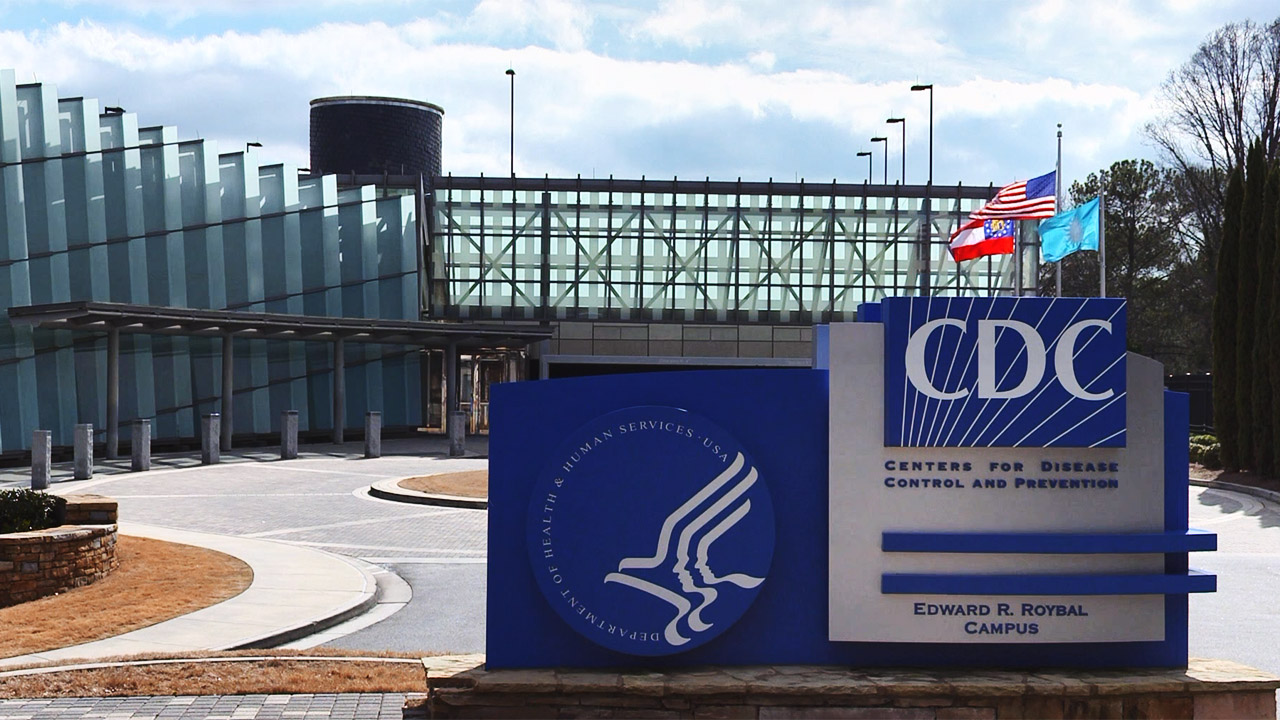
The Centers for Disease Control and Prevention issued a new study report this week that revealed that restricted by employment and housing discrimination and lack of access to needed gender-affirming healthcare for transgender women increasing the risk of contracting HIV.
Researchers reviewed data from a 2019-2020 survey, the National HIV Behavioral Surveillance Among Transgender Women, which found that the demographics of HIV/AIDS have been disproportionally high, especially among Black and Latina trans women, who had experienced employment and housing discrimination coupled with lack of access to gender-affirming healthcare.
The Jan. 25 Morbidity and Mortality Weekly Report was based on data studies of more than 1,600 trans women in seven major urban locales. Participants from Atlanta, Los Angeles, New Orleans, New York, Philadelphia, San Francisco and Seattle were chosen by referrals from people and community-based organizations who knew or were part of the local population of trans women.
The study’s researchers noted: “Employment discrimination occurs at the overlapping nexus of poverty, homelessness, incarceration, health insurance, disability, food insecurity and survival sex work. These issues are interconnected.”
The study stated that trans women’s inability to access quality healthcare, including gender-affirming treatment or access to PrEP, and can expose them to potential incarceration as many turn to “survival sex work” and violence, which increases the risk of contracting HIV.
The study’s author’s pointed out: “When economically marginalized transgender women are refused employment, this refusal cyclically contributes to economic hardships. This analysis …demonstrates the importance of transgender women working and living with dignity and without fear of unfair treatment.”
Health
A Whole New Perspective on Well-Being
The Mather’s team recognizes that everyone’s wellness journey is completely unique to their life experiences and influences.

It’s easy to spot the distinctive, elegant silhouette of The Mather, a Life Plan Community for those 62+ opening this spring in Tysons, Virginia. What is not apparent to the naked eye is The Mather’s unique wellness philosophy, which is literally built into the community.
The Mather’s team recognizes that everyone’s wellness journey is completely unique to their life experiences and influences.
Nature is one of the important factors that contribute to well-being. So The Mather is incorporating biophilic design—a design approach to facilitate access to nature or things that replicate natural patterns. This can include interior spaces with sightlines to a garden, choosing natural wood and stone as interior materials, or incorporating fragrant flowers and plants indoors to spark memories and provide tactile opportunities such as gardening.
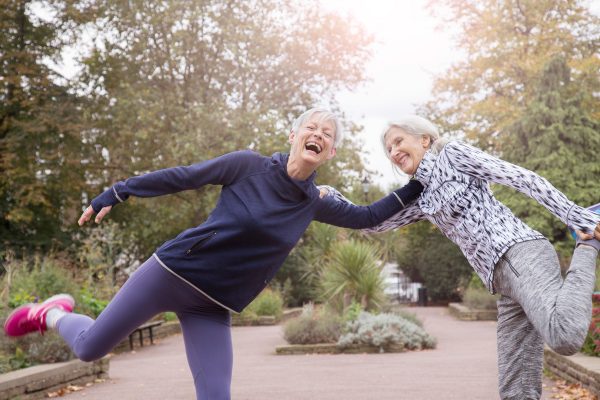
“Providing biophilic design within interior settings connects residents to the natural world,” says Mary Leary, CEO and President of Mather, the organization behind The Mather. “Research shows that a connection to nature provides positive benefits to mental states and overall well-being. At The Mather, biophilic design is the intersection of buildings and programs with nature in an urban setting.”
“The Mather is attracting a diverse group of older adults,” says Mary. “As a result, we aim to incorporate wellness practices from around the world, including Wyda movement theory of the Celtic Druids, which helps people achieve harmony with nature and contentment through mindfulness.” This holistic regenerative approach is similar to Qi Gong and yoga, while born in a different part of the world. Mather Institute has a special focus on mindfulness to support older adults’ practice of present moment awareness, which can lead to increased overall well-being, compassion, and joy.
A very different example of a wellness offering at The Mather is the Gharieni Welnamis spa wave bed, which uses computer-controlled vibrational therapy and audio frequencies to train the brain to relax. “The bed increases mindfulness, concentration, and creativity—all of which support our mission of creating Ways to Age Well,SM” says Mary.
These and other personalized ways to wellness will ensure that residents of The Mather can choose from seemingly countless ways to focus on their well-being. In other words, the sky’s the limit!
-

 South America3 days ago
South America3 days agoDaniel Zamudio murderer’s parole request denied
-

 Maryland4 days ago
Maryland4 days agoMontgomery County police chief discusses arrest of trans student charged with planned school shooting
-

 Commentary5 days ago
Commentary5 days agoWorld ‘isn’t much different today’
-

 Theater3 days ago
Theater3 days ago‘Amm(i)gone’ explores family, queerness, and faith

